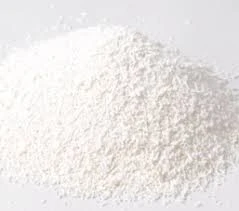
Understanding E472b Food Additive and Its Uses in Food Products
Understanding E472b A Food Additive in Focus
Food additives play a crucial role in the modern food industry, enhancing flavor, appearance, and shelf life of products. Among these additives stands E472b, a compound that garners attention for its unique properties and applications. E472b, known as diacetyl tartaric acid esters of mono- and diglycerides, is primarily used as an emulsifier and stabilizer in various food items.
What is E472b?
E472b is a type of food additive derived from natural sources. It is produced from the reaction between tartaric acid and mono- and diglycerides, which are often obtained from vegetable oils. This process results in a substance that is effective in improving the texture and stability of food products, making it a valuable ingredient in many formulations.
Applications of E472b
E472b is widely utilized in the food industry for several applications. One of its most significant roles is as an emulsifier, helping to blend ingredients that typically do not mix well, such as oil and water. This property is particularly beneficial in products like margarine, dressings, and spreads, where a smooth and uniform texture is desirable.
Additionally, E472b contributes to the freshness and longevity of foods. By stabilizing emulsions, it helps prevent the separation of ingredients, thus maintaining the product's quality over time. This attribute is essential not only for consumer satisfaction but also for reducing food waste in the supply chain.
e472b food additive

Safety and Regulations
The safety of E472b has been extensively studied, and it is generally considered safe for consumption. Regulatory bodies, including the European Food Safety Authority (EFSA) and the U.S. Food and Drug Administration (FDA), have evaluated the additive and established acceptable daily intake levels. As with all food additives, it is crucial for manufacturers to adhere to regulatory guidelines to ensure consumer safety.
Potential Concerns
While E472b is deemed safe, some individuals prefer to avoid synthetic additives in their diet. This reluctance often stems from a growing trend toward natural and organic foods, where consumers are increasingly conscious of what goes into their bodies. As a result, food manufacturers are responding by creating cleaner labels, sometimes opting for alternative emulsifiers that are derived from wholly natural sources.
Conclusion
E472b serves as a vital component in the food additive landscape, providing essential functionality in a variety of products. Its role as an emulsifier and stabilizer addresses important needs within the industry, ensuring that food remains appealing, stable, and safe for consumption. As consumer preferences shift towards more organic options, E472b will likely continue to be scrutinized, highlighting the ongoing balance between food technology and natural ingredients. Understanding additives like E472b not only enhances our knowledge of food science but also empowers consumers to make informed choices about the foods they eat.
-
Pure Sodium Dichloroisocyanurate Dihydrate | Powerful DisinfectantNewsAug.29,2025
-
Industrial Chemicals: Quality & Purity for Every IndustryNewsAug.28,2025
-
Nitrile Rubber Honoring Strict Production StandardsNewsAug.22,2025
-
Aspartame Ingredients Honoring Food Safety ValuesNewsAug.22,2025
-
Fertilizer for Balanced Plant NutritionNewsAug.22,2025
-
Cyanide Gold Processing with High Purity AdditivesNewsAug.22,2025
-
Formic Acid in Textile Dyeing ApplicationsNewsAug.22,2025
Hebei Tenger Chemical Technology Co., Ltd. focuses on the chemical industry and is committed to the export service of chemical raw materials.
-

view more DiethanolisopropanolamineIn the ever-growing field of chemical solutions, diethanolisopropanolamine (DEIPA) stands out as a versatile and important compound. Due to its unique chemical structure and properties, DEIPA is of interest to various industries including construction, personal care, and agriculture. -

view more TriisopropanolamineTriisopropanolamine (TIPA) alkanol amine substance, is a kind of alcohol amine compound with amino and alcohol hydroxyl, and because of its molecules contains both amino and hydroxyl. -

view more Tetramethyl Thiuram DisulfideTetramethyl thiuram disulfide, also known as TMTD, is a white to light-yellow powder with a distinct sulfur-like odor. It is soluble in organic solvents such as benzene, acetone, and ethyl acetate, making it highly versatile for use in different formulations. TMTD is known for its excellent vulcanization acceleration properties, which makes it a key ingredient in the production of rubber products. Additionally, it acts as an effective fungicide and bactericide, making it valuable in agricultural applications. Its high purity and stability ensure consistent performance, making it a preferred choice for manufacturers across various industries.





